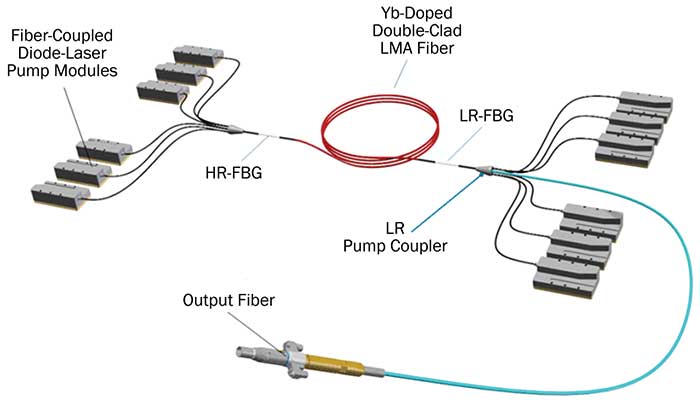ALLASER ROBOT SYSTEM REDUCES REMOTE WELDING TIME

High-power and high-beam-quality solid-state lasers, such as the thin-disk laser and fiber laser, have made laser welding popular in manufacturing industries. More recently, kilowatt direct-diode lasers have become commercially available with beam quality competitive to thin-disk or fiber lasers. This technology uses a laser beam combining method called wavelength beam combining, by which beam quality can be maintained without deterioration when power scaling. These solid-state laser are set to replace CO2 lasers as the main players in the field of remote laser welding.
LASER BONDING: A NEW CONNECTION TECHNOLOGY FOR HIGH CURRENTS
Power electronics constantly present packaging technologies with new challenges to handle ever-larger currents. For the high currents found in today’s power modules, several wires are bonded in parallel on the chip. Wire bonding enjoys major advantages: the bonds are highly reliable and have long lives; the process is very flexible because distances and positions of the bonds can be freely programmed and adapted; and it is a very cost-efficient process.
FIBER LASER WELDING CUTS COSTS AND IMPROVES RESULTS

Most traditional welding techniques use variations of arc welding. In these methods, two pieces of metal are first brought into contact or close physical proximity. A high voltage is launched between an electrode and the contact region, creating an arc that melts the material. The melted material fills any gap between the workpieces — or overlays them — and then solidifies to join the parts.
The major disadvantage of arc welding is that the joined parts are subjected to high heat. This can result in microstructures in the melted material that yield poor strength in the weld joint and a relatively large heat-affected zone in the material adjacent to the weld.
While in recent years traditional arc welding technologies have been optimized to reduce heat input and deliver higher single pass penetration, laser welding is still the method of lowest heat input with the largest depth-to-width ratios. Laser welding offers fully independent parameter selection, and is the easiest technique to fully automate.
LASER MACHINE ENABLES COIL JOINING IN CONTINUOUS STRIP PROCESSING LINES
Old flash butt welding machines or conventional laser welding machines are not able to weld modern steel grades in a reliable manner, as their high-alloying contents have an influence on the weldability of the materials. Furthermore, welding machines in existing lines need to be replaced as spare parts and in-house expertise availability dwindle.
In previous decades, more people were involved in operating and maintaining the equipment—but now, cost-control measures are reducing the number of involved personnel. That means maintenance-friendly machines are required with high availabilities that operate automatically and adaptively. SMS group reacted to this process change with a newly developed welding machine.
